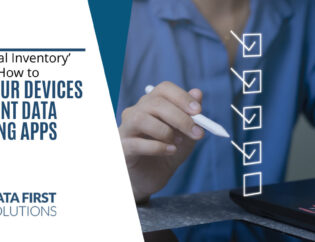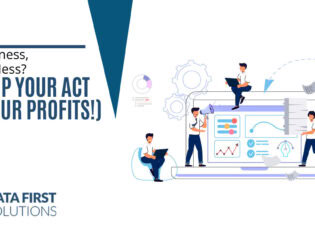
Ever feel like your systems just aren’t working together? You might have all the right tools, maybe even too many, but things still slip through the cracks. Sales doesn’t have the latest updates from support. Finance is pulling reports from three different platforms. And your team spends more time searching for data than actually putting it to use.
It’s not just frustrating, it costs you time and money. The good news? A tailored IT solution can bring your systems together and give you a clear, unified view. That’s the power of application integration.
You don’t need to start over, just make your apps work smarter together.
Too Many Tools, Not Enough Connection
Businesses rely on a variety of tools to get things done, but when those tools don’t work together, it leads to extra work, missing information, and unnecessary complexity. Integration helps solve this by connecting your systems, so they function as one.
In many cases, when data is scattered across multiple disconnected platforms, it makes operations more complicated, increases risk, and holds back growth. Integration brings it all together, streamlining workflows and setting the stage for smarter, more efficient scaling.
One Clear View
Imagine seeing different updates, all in one place. No more switching tabs or chasing down reports. Everything you need is right there. Just clean, connected data that supports every decision you make.
That’s what application integration is all about, bringing all your systems into one smooth, connected workflow. And with the help of a reliable IT partner, you don’t have to figure it out alone.
A Practical Guide to Making Integration Work for You
1. Start with What Matters Most
Instead of trying to connect every app all at once, begin with your biggest pain point. Maybe it’s syncing your CRM with your invoicing tool. Or making sure customer service has full access to their order history.
A good IT partner will help you start with a high-impact area, giving your team a quick win and building momentum for larger projects down the road.
2. Pick Tools That Actually Fit
Every business is different. The right integration tool should fit your current setup; not force you to start over.
Look for options that:
- Work well with your existing apps
- Keep your data synced automatically
- Don’t need heavy IT involvement to maintain
If your team isn’t tech-savvy, that’s okay. Most modern tools are made with regular users in mind. Your IT provider can handle the setup, so your staff can stay focused on their actual work.
3. Clean As You Connect
Integrating systems is the perfect time to clean up old or messy data.
As you go, make small improvements:
- Remove duplicate records
- Standardize how information is entered
- Use the same names or formats across tools
Taking this approach early on saves time down the line and builds confidence in your data. When your numbers are accurate, your decisions become much clearer.
4. Grow with a Plan
Once your initial integration is up and running smoothly, you’re ready to take on bigger challenges.
Start small, then expand into areas like:
- Payroll systems
- Marketing platforms
- Customer service portals
But avoid trying to tackle everything at once, it’s smarter to grow in phases. A good IT partner will help you set a plan, stay on track, and make sure each step supports your business goals.
What Happens If You Don’t Integrate?
Disconnected systems don’t just slow you down, they can lead to much bigger issues like:
- Confused customers getting the wrong info
- Teams repeatedly fixing the same issues over and over
- Lost opportunities due to buried or outdated data
As your business grows, these gaps only widen, more platforms, more users, and more chances for errors to slip through.
What You Gain from Integration
When everything works together, your team does too. You’ll save time and avoid errors. This also allows your team to work independently and gives them motivation to achieve business objectives. Here’s what integrating your apps can do for you:
Faster decisions: With real-time info in one place, no more guesswork.
Happier teams: Less duplicate work and fewer errors means better morale.
Better customer service: Your team gets the right information to help customers, exactly when they need it.
Room to grow: Modern systems are built to scale as you do.
Improved security: Many integration tools include features that protect your data automatically.
How to Get Started
You don’t need a big budget or a long timeline, just begin where it makes the biggest impact.
Begin with one simple connection. Maybe it’s linking your CRM to your email platform. Or syncing inventory with your online store. Something your team uses every day.
Then, build from there.
An IT partner can help with the following:
- Finding which systems to integrate first
- Recommending tools that suit your current setup
- Creating a rollout plan that fits your budget
- Training your team to use it with confidence
The best integrations feel like they were always part of the process.
Make Your Tools Work Together with Data First Solutions
Fed up with switching between systems or repeating tasks? You’re not alone. Many Canadian businesses have great tools; they just aren’t well connected. That’s where Data First Solutions comes in. We specialize in helping your existing systems work seamlessly together, so your apps and software support your team instead of slowing them down.
Whether you’re using cloud services, on-premises systems, or a combination of both, Data First Solutions will design a smarter, unified setup tailored to your way of working. No need for costly replacements, just seamless connections that save time, cut errors, and streamline your workflow.
Let’s connect your tools and simplify your day. Contact Data First Solutions today.









